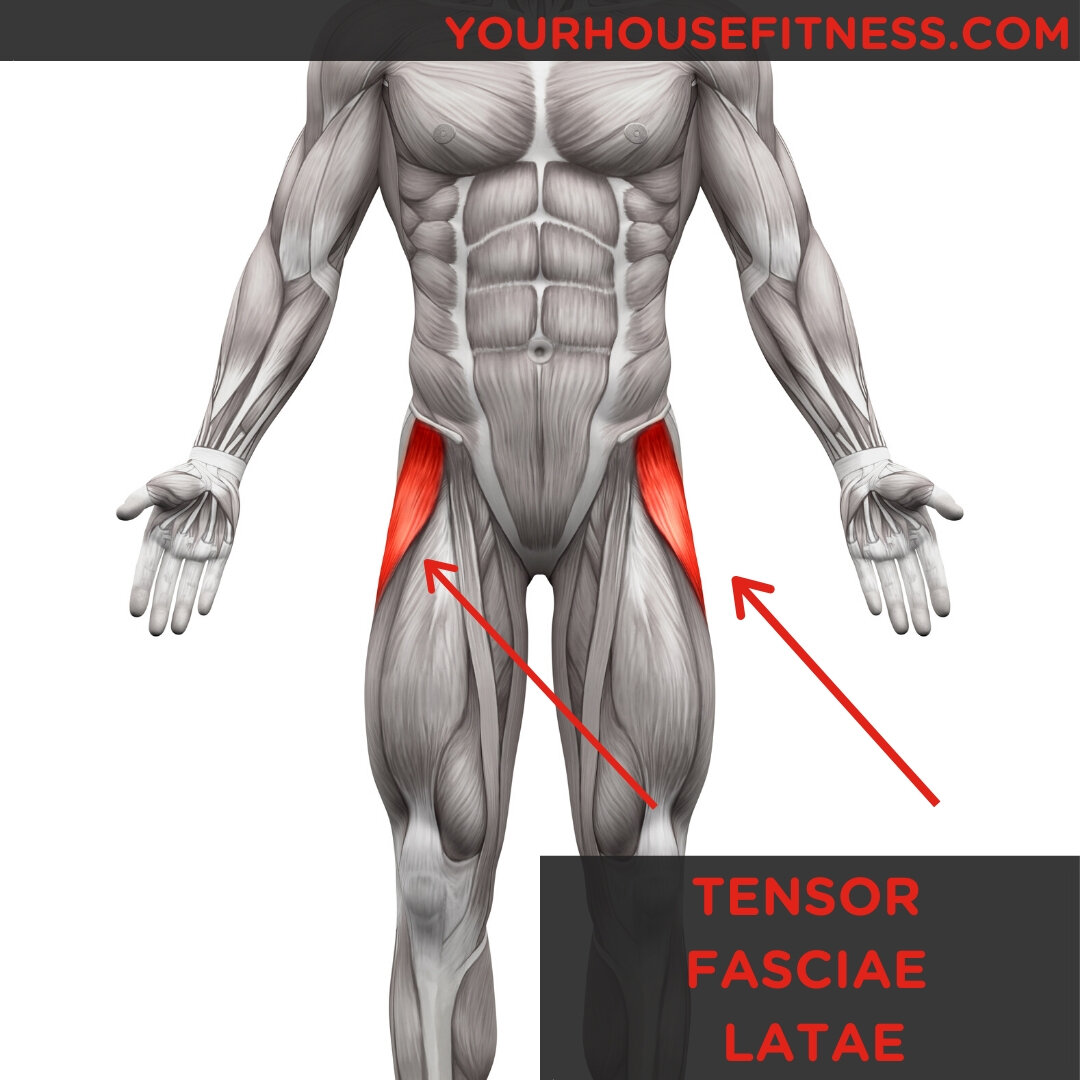Muscle Breakdown: Tensor Fasciae Latae
What Is the Tensor Fasciae Latae
The Tensor Fasciae Latae (TFL) is a small vertical muscle that is enclosed by two pieces of fascia. It is often a forgotten muscle, however it is a very important hip flexor! Often runners, cyclists and dancers will experience pain in the Tensor Fasciae Latae. This can be relieved with foam rolling or stretching.
Tensor Fasciae Latae Muscle & Cadaver
Tensor Fasciae Latae Function
The Tensor Fasciae Latae is involved in many functions. This may surprise people as it is not a popular muscle to train in the body. Specifically, the Tensor Fasciae Latae is responsible for,
Medial Hip rotation and mild Hip Abduction
Assists in Hip Flexion
Contributes to stabilizing the Hip with the Gluteus Maximus and Iliotibial Band by holding the Hip joint together
Contributes to stabilizing the Knee during Extension with the Iliotibial Band
Helps the Iliotibial Band to laterally rotate the leg
Helps to elevate the non-weight bearing leg in the swing phase during walking
Tensor Fasciae Latae Origin And Insertion
Tensor Fasciae Latae Origin
The origin of the Tensor Fasciae Latae is the Anterior Superior Iliac Spine and the Anterior Iliac Crest.
Tensor Fasciae Latae Insertion
The Tensor Fasciae Latae inserts into the Iliotibial Tract along with the Gluteus Maximus.
Tensor Fasciae Latae Innervation
The Tensor Fasciae Latae is innervated by the Superior Gluteal Nerve.
Tensor Fasciae Latae Location
The Tensor Fasciae Latae is located just below the lateral hip in the thigh and is roughly 15cm in length.
Tensor Fasciae Latae Pain
Sometimes, actions such as sitting in a chair all day (which is happening to most of us these days) can cause the Tensor Fasciae Latae to tighten up resulting in pain around the glutes, hip and low back. Athletes who consistently run or cycle may also suffer from pain in the Tensor Fasciae Latae.
Stretching is the best way to relieve pain in the Tensor Fasciae Latae. Foam rolling is also beneficial to release a tight Tensor Fasciae Latae.
Tensor Fasciae Latae Strain
Tensor Fasciae Latae Strains are uncommon. In the unlikely event that you were to strain the Tensor Fasciae Latae, a study found that rest, ice, heat and flexibility exercises are the best method of treatment. In general, muscle strains can take about 4-6 weeks to heal.
Tensor Fasciae Latae Stretch
If you are experiencing tightness in the Tensor Fasciae Latae, stretching is the best way to address this. Try out these Tensor Fasciae Latae stretches:
Wall Assisted Tensor Fasciae Latae Stretch
Find a wall and take one step sideways away from it. Extend the hand of the arm closest to the wall so that your palm is flat against the wall. Cross the opposite leg to your outstretched hand over the leg closest to the wall and lean your hip into the stretch. You can move your hand higher on the wall to go deeper into the stretch. Hold this position for 30 seconds and then switch sides.
Supine Stretch
Lie down on the floor on your back with your knees bent. Cross the calf of your right leg just below the knee of the left leg. Allow the weight of your right leg to bring the left leg down towards the floor. Hold this position for 30 seconds and then switch legs.
Low Lunge with Side bend
Come into a low lunge with your back knee making contact with the floor. Keep the torso upright. Whatever side of the body the leading leg is on, you are going to stretch the torso to that side. For example, if your right leg is bent in front of you, you are going to bend the torso to the right side. Lean forwards in the lunge to increase the intensity of the stretch. Hold for 30 seconds and then switch sides.



